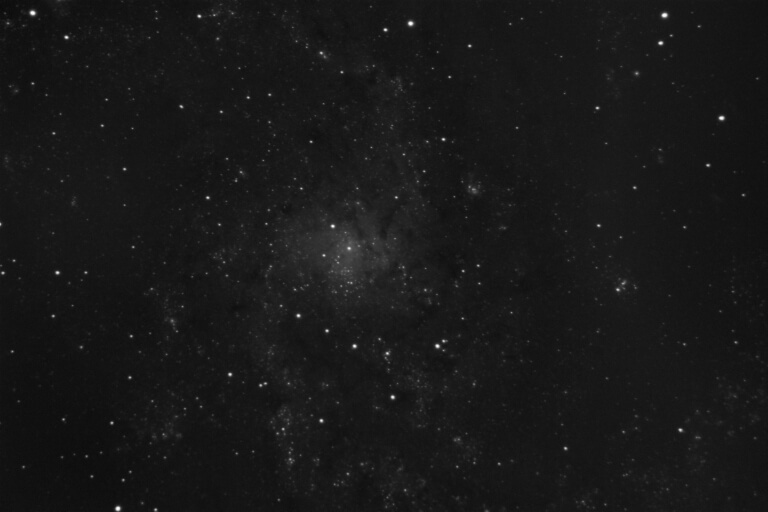Triangulum Galaxy
One possible continuing project for the 14" telescope and CCD camera is to look for cataclysmic variable stars in nearby galaxies. Both the Andromeda Galaxy (M31) and the Triangulum Galaxy (M33) are less than 1 megaparsec (Mpc) away, and the both pass near the zenith from Cerritos College campus. While the Andromeda Galaxy is many times bigger than the field of view of our system, the Triangulum Galaxy (M33 or NGC 598) mostly fits within one image. A 4-panel mosaic would be better for complete coverage, but I wanted to show what was possible in a single frame.
The most common cataclysmic variable star to look for is a nova. These are white dwarf stars that undergo a rapid brightening over about a day and fade away after a few days. The brightest of them would be detectable with our setup. More impressive would be a supernova. In galaxies that are as nearby as M31 and M33, we would be able to show that explosion to our students with the 8" Dobsonian reflectors. Searching for novae requires more patience, and it requires having a good reference image for comparison. It needs to be done with images rather than visually.
Below is an image of M33 that was taken on the night of 2023-10-22. It is a stack of 31 130 s exposures with a luminosity (visible light) filter taken with the SBIG STXL-6303 camera. The images were calibrated in AIP4Win software with bias, dark, and flat frames taken with the same system. The calibrated images were then aligned and averaged together to reduce noise. The center of the resulting image is at RA 1h 33m 45.9s and DEC +30° 39′ 25.3″ in J2000 coordinates. The image shown is adjusted so that it can be viewed on a webpage. To get the FITS version, download it from the new-image.fits link on astrometry.net.


Stay Connected